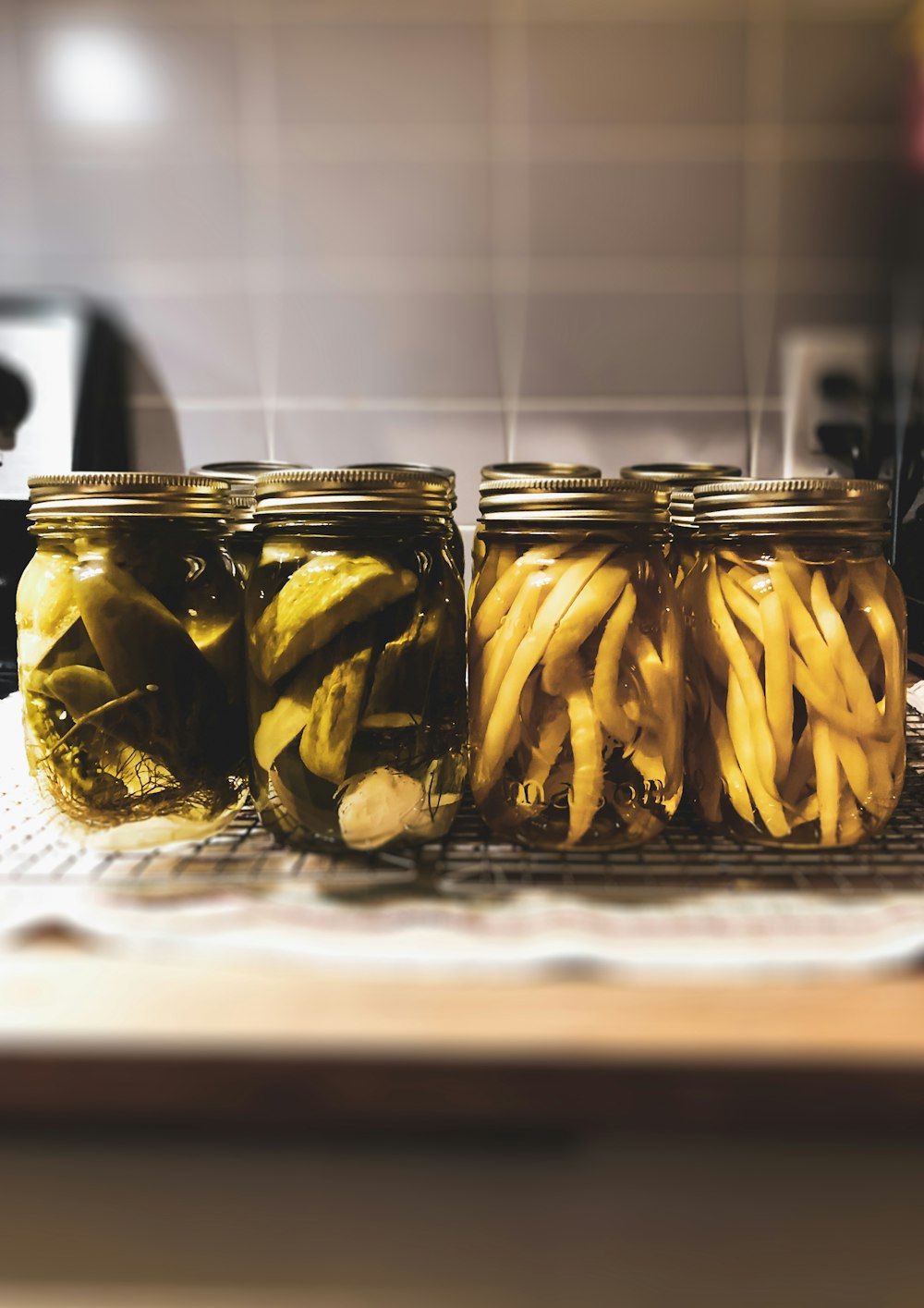Can We Carry Achar In Flight
When traveling by plane, it is common to have careful consideration of what is allowed to be carried on board, particularly in relation to food items. One item that has caused confusion and apprehension among passengers throughout the years is pickles, also known in the form of “achar.” The controversy over whether or not achar is allowed in checked or cabin baggage has sparked a ruckus at airports across the globe.
In this article, we’ll explore the complexities of bringing pickles while traveling and provide a better understanding of the rules and regulations that govern the unique travel companion. If you’re a fan of pickles or just looking for clarity on the subject, knowing these guidelines will aid you in dealing with security at airports without fear. Let’s begin this journey to find out the question: Are we allowed to carry achar while flying?
Rules and Regulations for Carrying Pickles on Flights
When packing pickles to take with you on your flight, you need to know the guidelines and rules imposed by the airlines and security authorities for aviation. These rules are implemented to ensure the security and safety of every passenger. This is what you must be aware of:
1. Prohibition in Hand-Baggage
The Bureau of Civil Aviation Security and other similar authorities across the globe have banned the use of pickles in hand luggage. The reason for this is security precautions. Thus, attempting to carry pickles inside your carry-on bag could result in problems at the security checkpoints in airports.
2. Liquid Limit
The general rule for carrying liquids during flight is to ensure that there is no need to exceed 100 milliliters per container. The majority of pickle jars contain liquids, and if the contents of the jar exceed the limit, it shouldn’t be carried in your bag for carry-on.
3. Advice on Oily Foods
It is recommended to avoid carrying oily food items like pickles, Kachoris, samosas, etc. In your check-in luggage. These oils can leak and cause damage to other baggage items.
4. Secure Packing
If you’re planning to take your preferred jar of pickles for your trip, make sure that it’s well-packed and sealed securely. In certain cases, the pickles are allowed to be carried in checked baggage, provided they comply with certain weight limits.
5. Airline-Specific Rules
Every airline has an inventory of items that are permitted and types of items deemed dangerous and prohibited. To avoid any surprises in the terminal, go to your airline’s website to verify prohibited items from both check-in and cabin baggage.
TSA Regulations and Procedures
Security at airports and security, particularly when carrying unusual items such as pickle jars, requires knowledge of Transportation Security Administration (TSA) guidelines and procedures. Let’s take a closer look at the information you should be aware of when it comes to the pickle jar and TSA:
1. The 3-1-1 Rule for Liquids
The TSA applies a standard rule referred to in “3-1-1” for liquids. The rule permits passengers to carry gels, liquids, aerosols, and gels in containers with not more than 3.4 pounds (100 milliliters) each. The containers have to be placed in one quart-sized sealed plastic bag. If you are using pickle jars, they need to conform to this requirement, which means that the contents shouldn’t weigh more than 3.4 grams if you are planning to keep them in your luggage.
2. Security Screening for Pickle Jars
Pickle jars that are not sized, even if they are of the required size, must be subjected to security screening. When you arrive at an entry point for security screening, take the pickle jar out of your carry-on bag and put the Jar in an additional container to be screened with X-rays. This is essential to ensuring the security and safety of everyone traveling. In the event of a mishap, it could cause TSA agents to remove your pickle jars at the security checkpoint.
3. TSA’s Vigilance
Although you may have conversations with TSA agents regarding the danger that pickles pose, it’s important to realize that their main priority is security. TSA agents are instructed to follow strict guidelines for protecting travelers. If you bring over 3 pounds of pickled food items on board, you might not be allowed, so it’s best to follow the rule of 3-1-1 when it comes to liquids.
4. Return to Original Container
In some cases, TSA officers may instruct passengers to drain the contents of containers to be examined more closely. Although this could result in some products being lost, ensure that all efforts are made to return the contents to the container they came from after inspection. TSA will try to reduce any inconvenience caused by the security screening procedure.
Packing Tips for Pickles
When you’re packing pickles for travel, it’s more than just about complying with the regulations and rules; it’s also about making sure your pickle jar arrives at its destination in pristine condition and without mess. Here are some useful tips for packing pickles:
- Lock the lid tightly: When packing the pickle jars, make sure the lid is secured securely. Unsealed lids can cause leaks, which could cause a problem when traveling.
- The Jar should be placed upright: If you are packing the Jar of Pickles, put it on its side inside your carry-on or checked luggage. This reduces the chance of leakage, as the lid of the jar was made to stop liquid from escaping when placed upright.
- Double Packaging: To protect yourself from leaks, you should consider placing the pickle container inside the bag that is sealable. This additional layer will stop any spills that might occur and prevent them from harming other things in your bag.
- Check expiration dates: Make sure that the jar with the pickle you’re planning to carry has not reached the expiration date. TSA agents will scrutinize the items that are expired, and a product that is not in use could cause unnecessary concerns.
- Use a Zip-Top bag for liquids: When you’re carrying several liquid items, like your pickle jars, put them inside a quart-sized, resealable plastic bag. This allows you to adhere to the TSA’s 3-1-1 rules for liquids.
- Conserve Other items: When you’re packing your pickles with other things inside your backpack, particularly items that aren’t sealed, such as fruits or sandwiches, make sure that they’re kept in a secure place and separated from the Jar of Pickles to prevent cross-contamination.
- Take into consideration alternative packaging: Certain travelers prefer specially designed bags to carry liquids during security checkpoints. Although these bags are expensive, they can provide an extra layer of protection against spills.
- Clean your hands after handling: When handling pickles or any other food item, it is recommended to thoroughly clean your hands. This simple action helps to keep your hands clean throughout your trip.
International Travel Considerations
When traveling internationally and packing pickles, there are a few additional concerns and possible complications that travelers must take note of. Here’s what you should be aware of:
- The Customs Rules: Different countries have various laws governing customs in relation to the importation of foods, such as pickles, into their territories. It is essential to study and comprehend the regulations specific to the country of destination with regard to how to import food products. Certain countries may have strict regulations on what items can and cannot be brought in.
- Packing checked luggage: It is generally advised not to pack pickles in checked baggage due to the potential for leakage or damage; if you choose to pack them for travel outside the country, make sure that the container is sealed to stop any liquid from leakage in the course of transport. Placing it in bags made of plastic or wrapping it with a string can add an extra security layer.
- Sharp objects: Be aware of sharp objects like the lids made of steel on pickle jars. They should be stored in checked luggage instead of your carry-on bag in order to comply with international security standards for aviation.
- Specific Policies for Airlines: As regulations regarding customs vary, various airlines might have their own rules regarding pickles during international flights. Contact your airline prior to departure for more information about the rules and regulations.
- The risk of damage: Pickles packed in checked baggage, particularly when the container is fragile and prone to breaking, could pose a risk of damage in baggage handling. Be aware of the possible effects of reaching your destination with damaged pickle jars or pickle juice-soaked items.
- It is easy to access pickles: Take note of how you can access the Jar of Pickles on your international travels. It might be more difficult to get items out of baggage that are checked at the airport’s baggage claim. If you plan on having access to your snacks during the trip, placing them in your carry-on bags might be more efficient.
- Qt-Sized bags: If you’re putting your pickle container in your carry-on bag to travel internationally, make sure that it is in compliance with the requirements for a quart-sized bag for liquids, as stipulated by the 3-1-1 rules of TSA. Each container, which includes that pickle bottle, must be 3.4 pounds (100 milliliters) or less.
Conclusion
In the end, the experience of carrying pickles on an airplane is an intricate balance between your desire for food and regulations in the aviation industry. Although it’s possible to carry pickles, however, you must follow the 3-1-1 rule for liquids. You must pack them in a safe manner to stop leaks and take into consideration the implications of international customs and travel rules.
The TSA’s dedication to ensuring security should not be undervalued, and it’s a good idea to follow their guidelines. In the end, travelers should take into consideration the desire for a snack during their travels against the possible complexities and pick their strategy for packing accordingly. Whether you choose to pack the pickles, or not remaining well-informed and prepared will surely improve your travel experience. Safe travels, pickle enthusiasts!
Can We Carry Achar In Flight
When traveling by plane, it is common to have careful consideration of what is allowed to be carried on board, particularly in relation to food items. One item that has caused confusion and apprehension among passengers throughout the years is pickles, also known in the form of “achar.” The controversy over whether or not achar is allowed in checked or cabin baggage has sparked a ruckus at airports across the globe.
In this article, we’ll explore the complexities of bringing pickles while traveling and provide a better understanding of the rules and regulations that govern the unique travel companion. If you’re a fan of pickles or just looking for clarity on the subject, knowing these guidelines will aid you in dealing with security at airports without fear. Let’s begin this journey to find out the question: Are we allowed to carry achar while flying?
Rules and Regulations for Carrying Pickles on Flights
When packing pickles to take with you on your flight, you need to know the guidelines and rules imposed by the airlines and security authorities for aviation. These rules are implemented to ensure the security and safety of every passenger. This is what you must be aware of:
1. Prohibition in Hand-Baggage
The Bureau of Civil Aviation Security and other similar authorities across the globe have banned the use of pickles in hand luggage. The reason for this is security precautions. Thus, attempting to carry pickles inside your carry-on bag could result in problems at the security checkpoints in airports.
2. Liquid Limit
The general rule for carrying liquids during flight is to ensure that there is no need to exceed 100 milliliters per container. The majority of pickle jars contain liquids, and if the contents of the jar exceed the limit, it shouldn’t be carried in your bag for carry-on.
3. Advice on Oily Foods
It is recommended to avoid carrying oily food items like pickles, Kachoris, samosas, etc. In your check-in luggage. These oils can leak and cause damage to other baggage items.
4. Secure Packing
If you’re planning to take your preferred jar of pickles for your trip, make sure that it’s well-packed and sealed securely. In certain cases, the pickles are allowed to be carried in checked baggage, provided they comply with certain weight limits.
5. Airline-Specific Rules
Every airline has an inventory of items that are permitted and types of items deemed dangerous and prohibited. To avoid any surprises in the terminal, go to your airline’s website to verify prohibited items from both check-in and cabin baggage.
TSA Regulations and Procedures
Security at airports and security, particularly when carrying unusual items such as pickle jars, requires knowledge of Transportation Security Administration (TSA) guidelines and procedures. Let’s take a closer look at the information you should be aware of when it comes to the pickle jar and TSA:
1. The 3-1-1 Rule for Liquids
The TSA applies a standard rule referred to in “3-1-1” for liquids. The rule permits passengers to carry gels, liquids, aerosols, and gels in containers with not more than 3.4 pounds (100 milliliters) each. The containers have to be placed in one quart-sized sealed plastic bag. If you are using pickle jars, they need to conform to this requirement, which means that the contents shouldn’t weigh more than 3.4 grams if you are planning to keep them in your luggage.
2. Security Screening for Pickle Jars
Pickle jars that are not sized, even if they are of the required size, must be subjected to security screening. When you arrive at an entry point for security screening, take the pickle jar out of your carry-on bag and put the Jar in an additional container to be screened with X-rays. This is essential to ensuring the security and safety of everyone traveling. In the event of a mishap, it could cause TSA agents to remove your pickle jars at the security checkpoint.
3. TSA’s Vigilance
Although you may have conversations with TSA agents regarding the danger that pickles pose, it’s important to realize that their main priority is security. TSA agents are instructed to follow strict guidelines for protecting travelers. If you bring over 3 pounds of pickled food items on board, you might not be allowed, so it’s best to follow the rule of 3-1-1 when it comes to liquids.
4. Return to Original Container
In some cases, TSA officers may instruct passengers to drain the contents of containers to be examined more closely. Although this could result in some products being lost, ensure that all efforts are made to return the contents to the container they came from after inspection. TSA will try to reduce any inconvenience caused by the security screening procedure.
Packing Tips for Pickles
When you’re packing pickles for travel, it’s more than just about complying with the regulations and rules; it’s also about making sure your pickle jar arrives at its destination in pristine condition and without mess. Here are some useful tips for packing pickles:
- Lock the lid tightly: When packing the pickle jars, make sure the lid is secured securely. Unsealed lids can cause leaks, which could cause a problem when traveling.
- The Jar should be placed upright: If you are packing the Jar of Pickles, put it on its side inside your carry-on or checked luggage. This reduces the chance of leakage, as the lid of the jar was made to stop liquid from escaping when placed upright.
- Double Packaging: To protect yourself from leaks, you should consider placing the pickle container inside the bag that is sealable. This additional layer will stop any spills that might occur and prevent them from harming other things in your bag.
- Check expiration dates: Make sure that the jar with the pickle you’re planning to carry has not reached the expiration date. TSA agents will scrutinize the items that are expired, and a product that is not in use could cause unnecessary concerns.
- Use a Zip-Top bag for liquids: When you’re carrying several liquid items, like your pickle jars, put them inside a quart-sized, resealable plastic bag. This allows you to adhere to the TSA’s 3-1-1 rules for liquids.
- Conserve Other items: When you’re packing your pickles with other things inside your backpack, particularly items that aren’t sealed, such as fruits or sandwiches, make sure that they’re kept in a secure place and separated from the Jar of Pickles to prevent cross-contamination.
- Take into consideration alternative packaging: Certain travelers prefer specially designed bags to carry liquids during security checkpoints. Although these bags are expensive, they can provide an extra layer of protection against spills.
- Clean your hands after handling: When handling pickles or any other food item, it is recommended to thoroughly clean your hands. This simple action helps to keep your hands clean throughout your trip.
International Travel Considerations
When traveling internationally and packing pickles, there are a few additional concerns and possible complications that travelers must take note of. Here’s what you should be aware of:
- The Customs Rules: Different countries have various laws governing customs in relation to the importation of foods, such as pickles, into their territories. It is essential to study and comprehend the regulations specific to the country of destination with regard to how to import food products. Certain countries may have strict regulations on what items can and cannot be brought in.
- Packing checked luggage: It is generally advised not to pack pickles in checked baggage due to the potential for leakage or damage; if you choose to pack them for travel outside the country, make sure that the container is sealed to stop any liquid from leakage in the course of transport. Placing it in bags made of plastic or wrapping it with a string can add an extra security layer.
- Sharp objects: Be aware of sharp objects like the lids made of steel on pickle jars. They should be stored in checked luggage instead of your carry-on bag in order to comply with international security standards for aviation.
- Specific Policies for Airlines: As regulations regarding customs vary, various airlines might have their own rules regarding pickles during international flights. Contact your airline prior to departure for more information about the rules and regulations.
- The risk of damage: Pickles packed in checked baggage, particularly when the container is fragile and prone to breaking, could pose a risk of damage in baggage handling. Be aware of the possible effects of reaching your destination with damaged pickle jars or pickle juice-soaked items.
- It is easy to access pickles: Take note of how you can access the Jar of Pickles on your international travels. It might be more difficult to get items out of baggage that are checked at the airport’s baggage claim. If you plan on having access to your snacks during the trip, placing them in your carry-on bags might be more efficient.
- Qt-Sized bags: If you’re putting your pickle container in your carry-on bag to travel internationally, make sure that it is in compliance with the requirements for a quart-sized bag for liquids, as stipulated by the 3-1-1 rules of TSA. Each container, which includes that pickle bottle, must be 3.4 pounds (100 milliliters) or less.
Conclusion
In the end, the experience of carrying pickles on an airplane is an intricate balance between your desire for food and regulations in the aviation industry. Although it’s possible to carry pickles, however, you must follow the 3-1-1 rule for liquids. You must pack them in a safe manner to stop leaks and take into consideration the implications of international customs and travel rules.
The TSA’s dedication to ensuring security should not be undervalued, and it’s a good idea to follow their guidelines. In the end, travelers should take into consideration the desire for a snack during their travels against the possible complexities and pick their strategy for packing accordingly. Whether you choose to pack the pickles, or not remaining well-informed and prepared will surely improve your travel experience. Safe travels, pickle enthusiasts!











